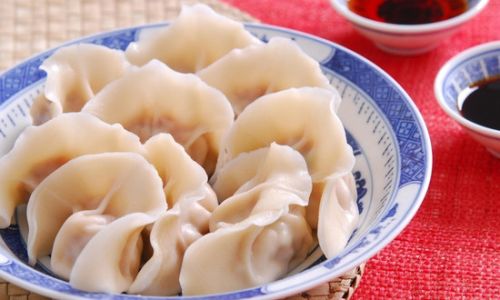Introduction
Dumplings, a beloved culinary treasure found in kitchens across continents, are celebrated for their versatility and ability to encapsulate flavors within a delicate wrapper. At the heart of every exceptional dumpling lies a critical choice: the meat. The selection of meat influences texture, richness, and overall taste, transforming a simple dish into a memorable experience. This guide delves into the nuances of selecting, preparing, and pairing meats for dumplings, exploring cultural preferences, culinary techniques, and health considerations. Whether you’re a seasoned chef or a novice home cook, understanding the role of meat in dumpling-making will elevate your creations to new heights.
The Foundations of Dumpling Meat Selection
The ideal dumpling meat balances fat content, flavor, and texture. Fat ensures juiciness and prevents dryness, while lean meat contributes to a firm, cohesive filling. A ratio of 70% meat to 30% vegetables or aromatics is a common starting point, but this can vary based on dietary preferences and regional traditions.
Key Considerations:
- Fat Content: Marbling or added fat (e.g., lard, bacon) enhances moisture.
- Texture: Finely minced meat binds better than coarse chunks.
- Flavor Pairing: Meat should complement, not overpower, seasonings and accompaniments.
Pork: The Classic Choice
Pork reigns supreme in dumpling traditions worldwide, from Chinese jiaozi to Polish pierogi. Its mild, slightly sweet flavor and versatile texture make it a crowd-pleaser.
Best Cuts:

- Shoulder (Boston Butt): Fatty and flavorful, ideal for juicy fillings.
- Belly: Rich and unctuous, perfect for slow-cooked or fried dumplings.
- Ground Pork: Convenient and consistent, though quality varies.
Preparation Tips:
- Mix with grated ginger, garlic, and soy sauce for Asian-style dumplings.
- Add water chestnuts or cabbage for crunch and moisture.
- Avoid overmixing, which can toughen the meat.
Cultural Note: In China, pork dumplings symbolize prosperity and are a Lunar New Year staple.
Beef: A Hearty Alternative
Beef’s robust flavor and leaner profile appeal to those seeking a bolder taste. It pairs exceptionally well with spices and herbs, making it a favorite in Central Asian and Eastern European dumplings.
Best Cuts:
- Chuck: Well-marbled, ensuring tenderness.
- Sirloin: Leaner but requires careful cooking to avoid dryness.
- Ground Beef: Opt for 85% lean to 15% fat for balance.
Preparation Tips:
- Marinate in paprika, cumin, or onions for depth.
- Combine with sautéed mushrooms or grated carrots for moisture.
- Use in Siberian pelmeni with sour cream and dill.
Cultural Note: In Kazakhstan, beef-and-onion dumplings (manti) are steamed in large batches for feasts.
Chicken: Lean and Versatile
Chicken offers a lighter option, prized for its mild taste and adaptability. It shines in health-conscious recipes and pairs well with fresh herbs and citrus.
Best Cuts:
- Thigh: Juicier and more flavorful than breast.
- Ground Chicken: Use dark meat for moisture; avoid all-white meat, which can be dry.
Preparation Tips:
- Mix with cilantro, lime zest, and fish sauce for a Thai twist.
- Add finely chopped shiitake mushrooms for umami.
- Poach chicken first for a smoother texture.
Cultural Note: In India, spiced chicken dumplings (momo) are steamed and served with fiery chutneys.
Lamb: Rich and Flavorful
Lamb’s distinctive gaminess and tender texture make it a luxurious choice, particularly in Middle Eastern and Mediterranean dumplings.
Best Cuts:
- Leg: Lean yet succulent when minced.
- Shoulder: Fatty and full-flavored, ideal for slow-cooked fillings.
Preparation Tips:
- Pair with mint, yogurt, and toasted spices (e.g., cumin, coriander).
- Balance richness with lemon juice or sumac.
- Use in Turkish mantı with garlic-yogurt sauce.
Cultural Note: In Mongolia, lamb dumplings (buuz) are a winter staple, often served with fermented mare’s milk.

Seafood and Vegetarian Options
While meat-centric, dumplings also embrace seafood and plant-based proteins.
Seafood:
- Shrimp: Sweet and bouncy; pair with pork or alone.
- Fish: Use white-fleshed varieties (e.g., cod) with ginger and scallions.
- Crab: Luxurious but labor-intensive; combine with cream cheese.
Vegetarian:
- Tofu: Firm tofu crumbles absorb flavors well.
- Mushrooms: Shiitake or porcini add meaty umami.
- Lentils: Cooked and mashed for a hearty filling.
Preparation Techniques for Perfect Meat Fillings
Mincing vs. Grinding:
- Hand-minced meat retains texture; machine-ground yields uniformity.
- For juiciness, avoid overprocessing.
Marinating:
- Acidic marinades (e.g., vinegar, citrus) tenderize tougher cuts.
- Enzymatic marinades (e.g., pineapple, kiwi) break down proteins but require caution to prevent mushiness.
Binding Agents:
- Egg white or cornstarch helps meat adhere to vegetables.
- Cold stock or ice water adds moisture without thinning the filling.
Cooking Methods and Meat Considerations
Boiling: Requires leaner meats (e.g., chicken) to prevent greasiness.
Pan-Frying (Potstickers): Fatty meats (e.g., pork) crisp beautifully.
Steaming: Preserves moisture; ideal for delicate fillings.
Cultural and Regional Variations
- Japan: Gyoza often uses pork and cabbage with garlic and sesame oil.
- Italy: Ravioli may feature beef or veal with ricotta and herbs.
- Nepal: Yomari dumplings stuffed with molasses and buffalo meat.
Health and Sourcing Considerations
- Organic/Pasture-Raised: Enhances flavor and ethical appeal.
- Fat Reduction: Use leaner cuts or substitute with mushrooms/tofu.
- Allergens: Cross-contamination risks with seafood or nuts.
Troubleshooting Common Issues
- Dry Fillings: Add grated vegetables (e.g., zucchini) or a splash of stock.
- Tough Texture: Overmixing; use a gentle hand.
- Lack of Flavor: Amplify seasonings or incorporate fermented ingredients (e.g., kimchi).
Pairing Meats with Global Flavors
- Asian: Pork with soy, ginger, and sesame.
- European: Beef with paprika, sour cream, and dill.
- Latin American: Chicken with achiote, cilantro, and lime.
Conclusion
The art of dumpling-making hinges on the symphony of meat, seasonings, and technique. Pork’s versatility, beef’s boldness, chicken’s lightness, and lamb’s richness each offer unique pathways to culinary delight. By understanding meat selection, preparation, and cultural contexts, you can craft dumplings that transcend mere sustenance, becoming vessels of tradition and innovation. Whether you’re recreating a cherished family recipe or experimenting with bold new flavors, the right meat is your gateway to dumpling perfection.
Final Tip: Always taste your filling raw (if using cooked ingredients) and adjust seasonings before assembling. A well-seasoned filling is the secret to unforgettable dumplings!






0 comments